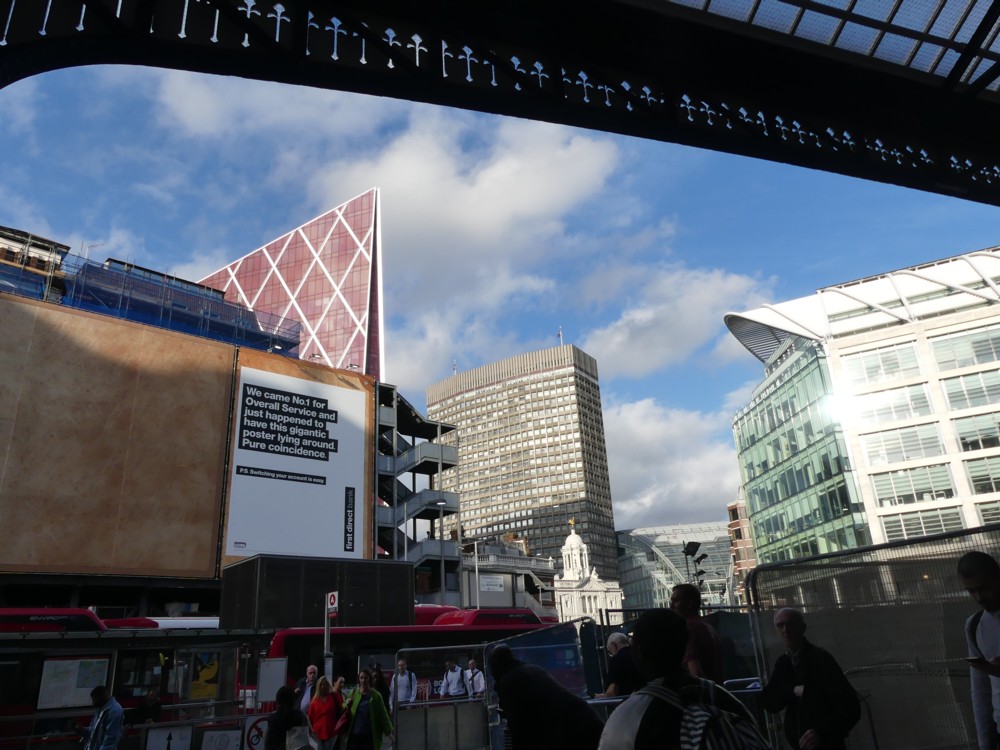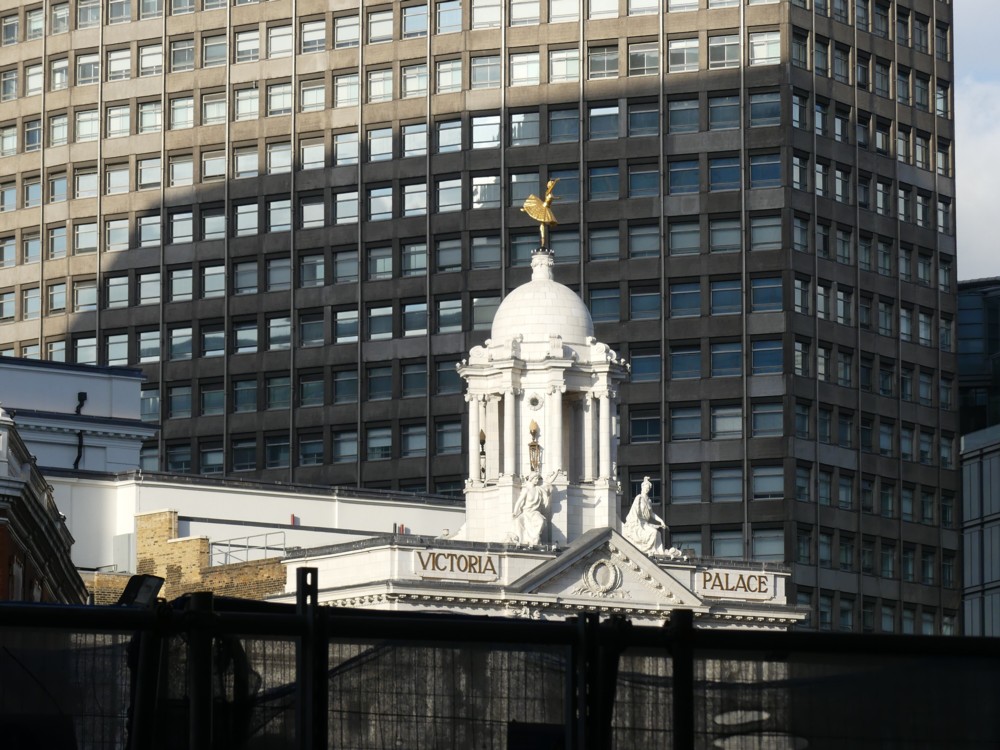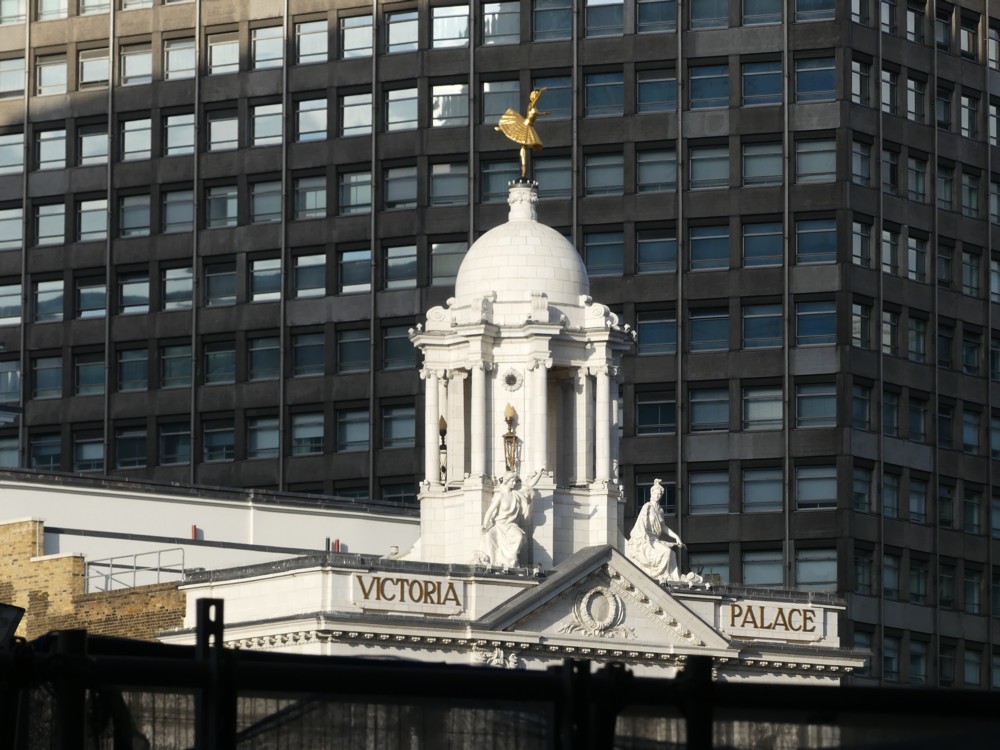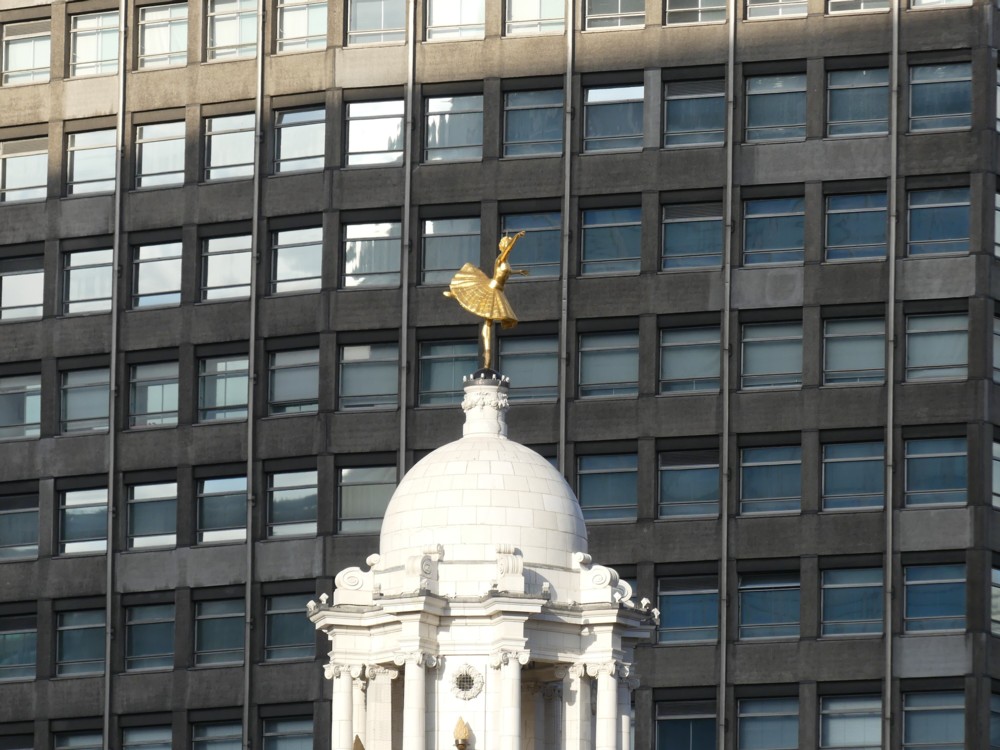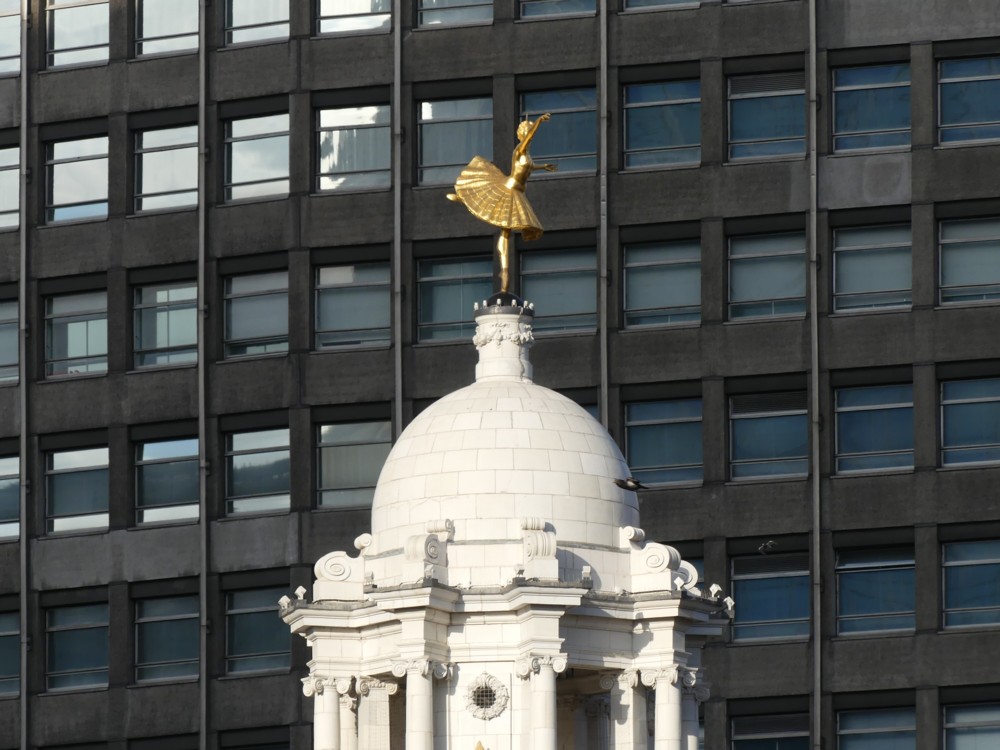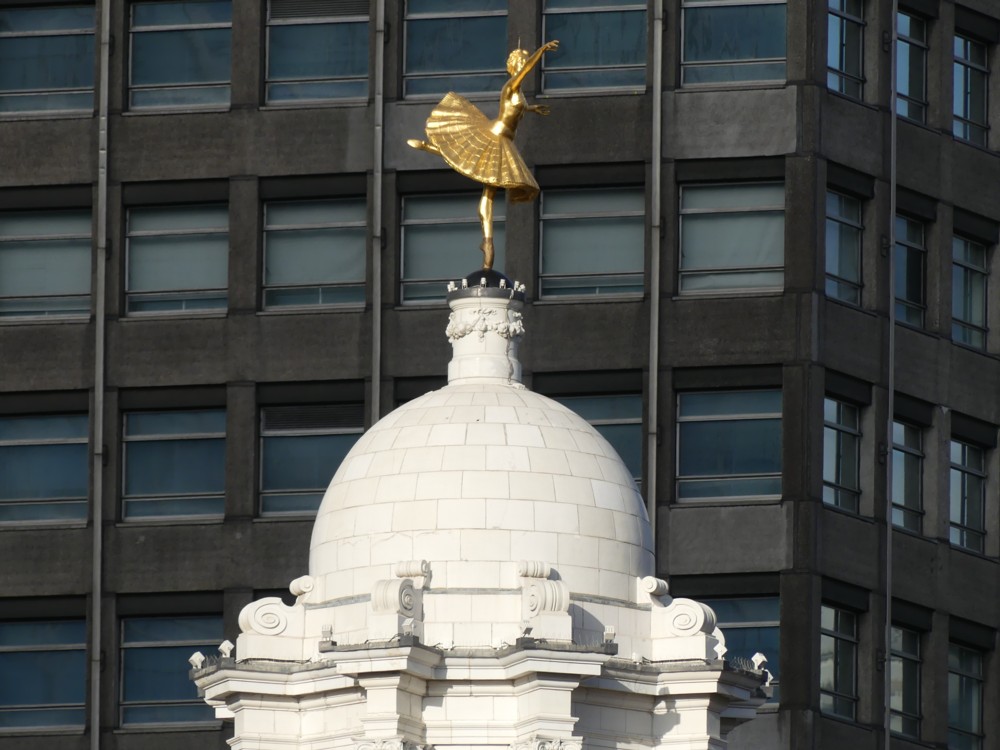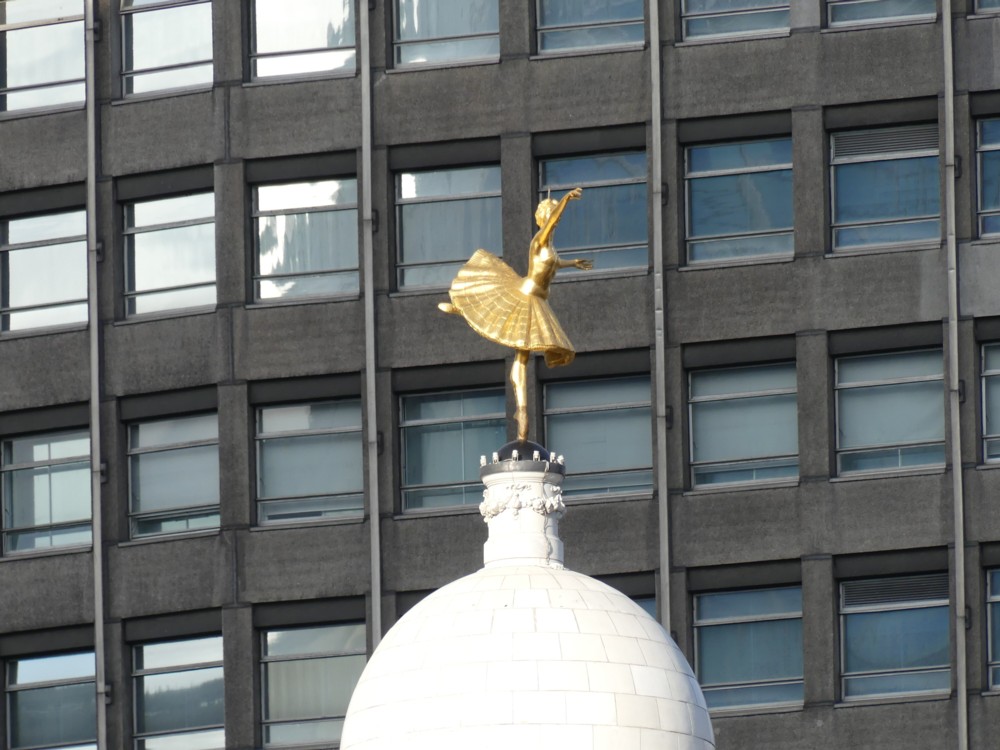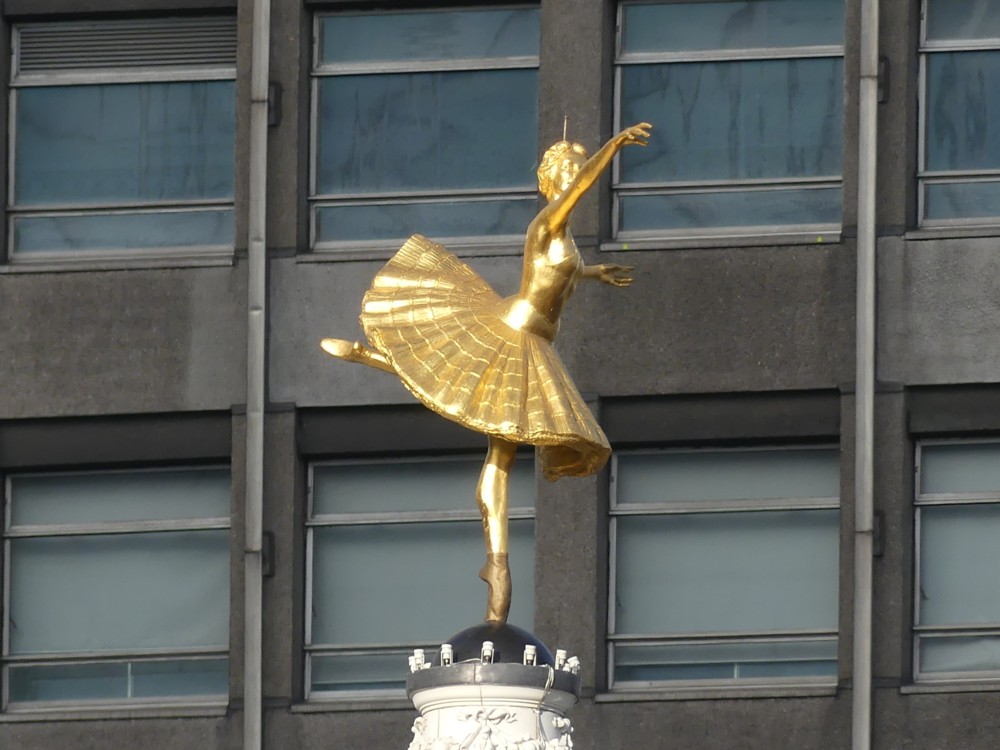Yesterday I was in Victoria Station, and as I emerged from it into … that mess of activity outside the front entrance, I noticed that the light seemed particularly appealing. At first what got my attention was the combined effect of the mess in the foreground, in the dark, and the assorted Medium Sized Things in the background, totally mismatched and just jambed down together in the London style, all illuminated. (See photos 1.1 and 1.2 below.)
But then, I found myself zeroing in, yet again, on Pavlova. What got me noticing her was that, finally, I seemed to have found the right moment to photo her with that big concrete lump that calls itself “Portland House” behind her. I have done this a lot, but it has never worked until now. This time, there was a shadow behind Pavlova, while Pavlova herself, and the dwarfed-by-modernity theatre on the top of which Pavlova dances, were both picked out by the light, a combination of circumstances I have never before encountered, or if I did I didn’t notice.
I took many photos of this effect. Partly because I can’t decide which one I like best, and partly because I think these photos look good when small, here are 3×3=9 of them:
Maybe the Wikipedia entry for Portland House does say who originally designed this unlovely edifice, but if it does, I couldn’t find that. Wikipedia does note, however, that Portland House is a miniature rip-off of the Pan Am Building in New York, now called something else.
Further googling got me to a piece by Mike Higginbottom entitled Pan-Am’s London sibling. He rather likes it. Plus, he name checks the now pretty much forgotten architect of said sibling: Howard Fairbairn & Partners. Modern Movement hulks by big name modernists sometimes have a certain in-your-face impact and memorability about them. But this hulk has always seemed to me to epitomise Modern Movementism at its dreariest. It’s not even “brutal”, just big, bland and boring. I greatly prefer Nova, the red diagonalised Medium Sized Thing nearby, which is also to be seen in photos 1.1 and 1.2 above.


